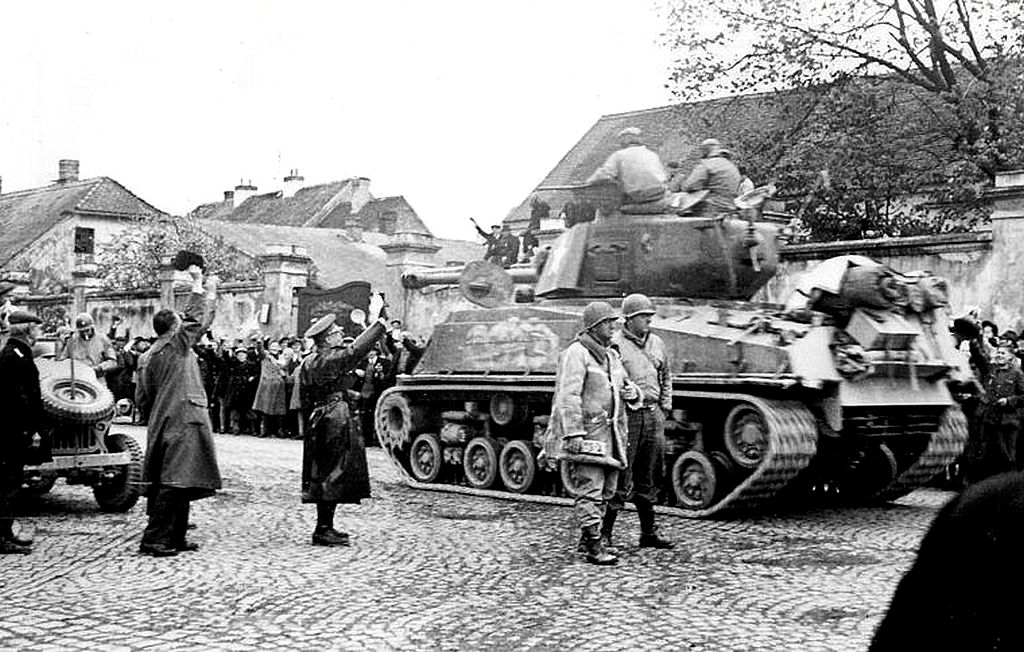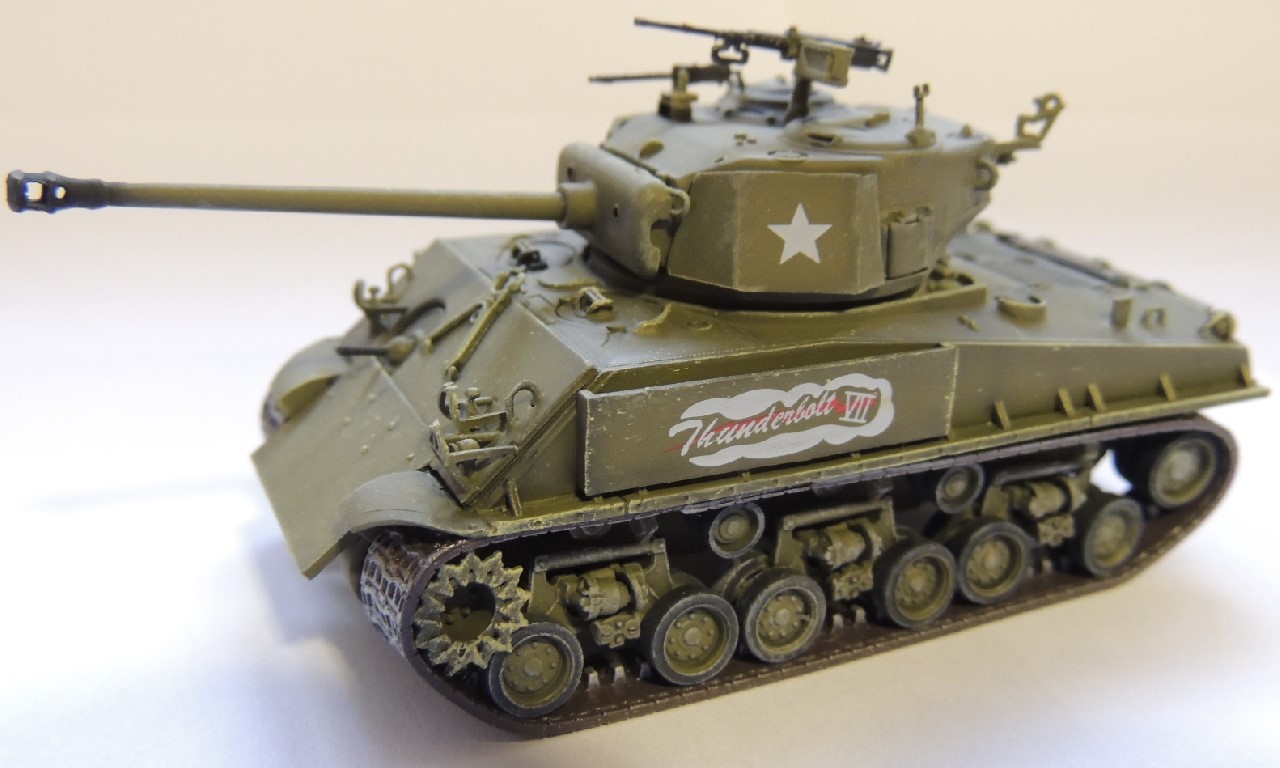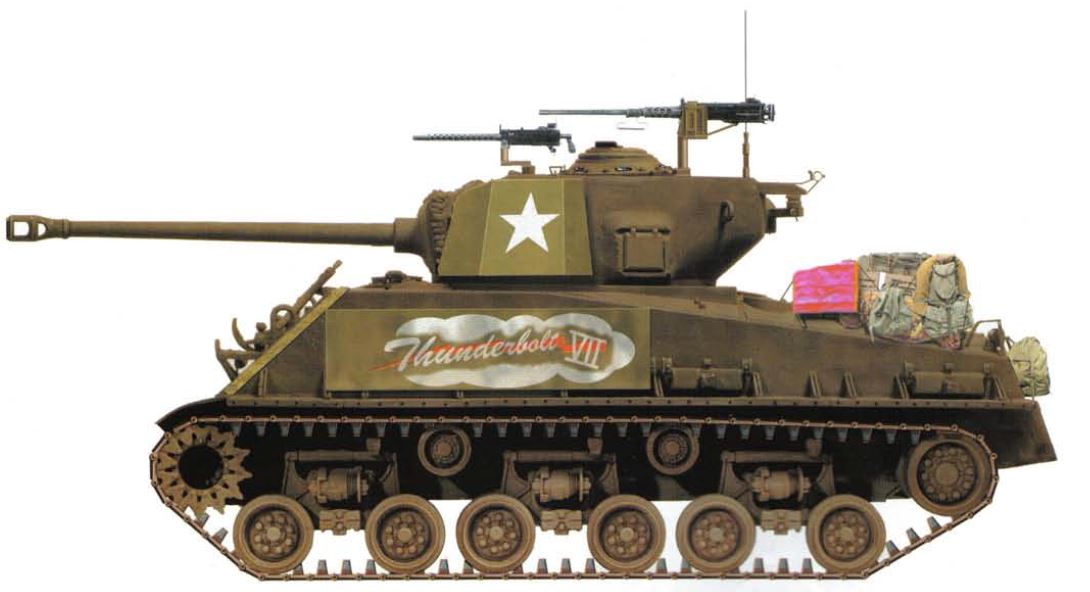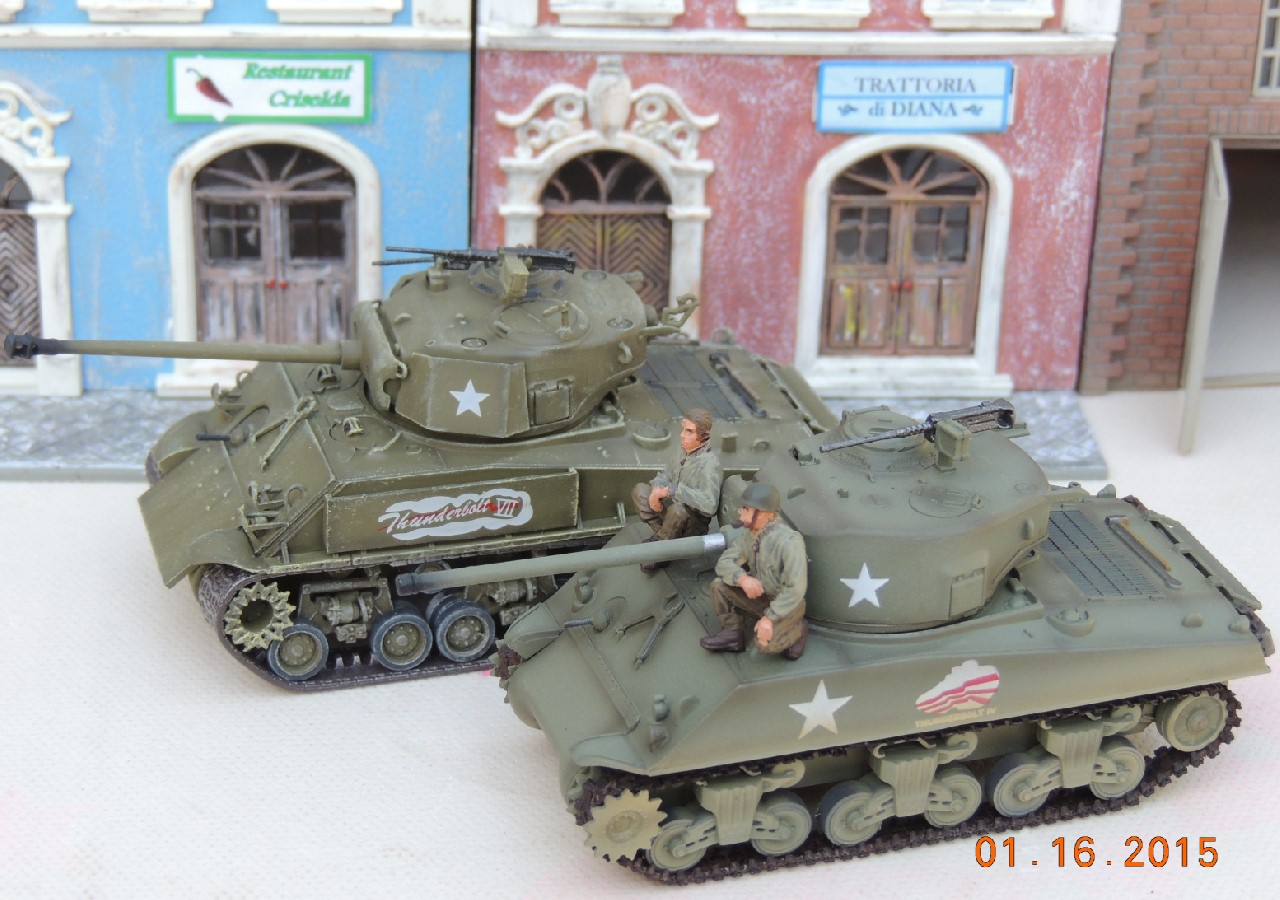The Dragon 60297 “Thunderbolt VII” Sherman is a particularly welcome release as the actual tank it represents was commanded by then-Lt. Col. Creighton Abrams, considered the best tank commander in the U.S. Army in WWII by General George Patton, and in whose honor the M1 Abrams Tank is named. Here’s my modest attempt to review this tank. I know it goes without saying, but please don’t hesitate to point out errors or guide me to additional photos so we can do justice to this tank.
General Creighton Abrams
Twice decorated with the Distinguished Service Cross for extraordinary heroism, Abrams, who was known for standing tall in his turret and leading from the front, made a name for himself during the Battle of the Bulge, when he led the 37th Tank Battalion in relief of an encircled American division at Bastogne. According to Steven Zaloga’s The Sherman at War (1): The European Theatre 1942-45, “besides being a superb unit commander, Abrams was probably one of the highest scoring American tankers during the war, as his battalion saw more tank-vs-tank combat than nearly any other and Abrams’ was the highest scoring crew in the battalion.” The New York Times reported at the time that “the retreating Germans were said to be fascinated and terrified by Colonel Abrams because they assumed from his name that he was Jewish, and that he saw himself as a wrathful Jehovah taking destructive vengeance on the Germans for what they had done to the Jewish people.” (http://warfarehistorynetwork.com/daily/wwii/colonel-creighton-abrams-at-the-battle-of-the-bulge/) A West Point graduate, General Abrams eventually served as Chief of Staff of the U.S. Army.
The Actual Tank
The “Thunderbolt VII” was an M4A3E8 Sherman, with a 76mm gun and Horizontal Volute Spring Suspension (HVSS), considered stronger and more stable than previous suspension systems. Here are photos of the actual “Thunderbolt VII,” taken in early 1945. Abrams, who commanded seven tanks during the course of the war, including four in the U.S. during training, used colorful thunderbolt motifs for his tanks that made them easily recognizable. Note the stowage on the engine deck. Our models would be even better if Dragon and other manufacturers included such items.
Note the appliqué steel armor plates on the hull and turret. General Patton prohibited the use of sandbags for extra protection of tanks in his Third Army, so many units in the 4th Armored Division used steel armor plates cannibalized from destroyed tanks. Of particular interest is the white turret star, which by this time had been painted over by many other tank crews in the division because they provided German crews with convenient targets.
This March 1945 photo, from Zaloga’s Sherman at War (2): The US Army in the European Theater 1943-45, shows the appliqué armor well.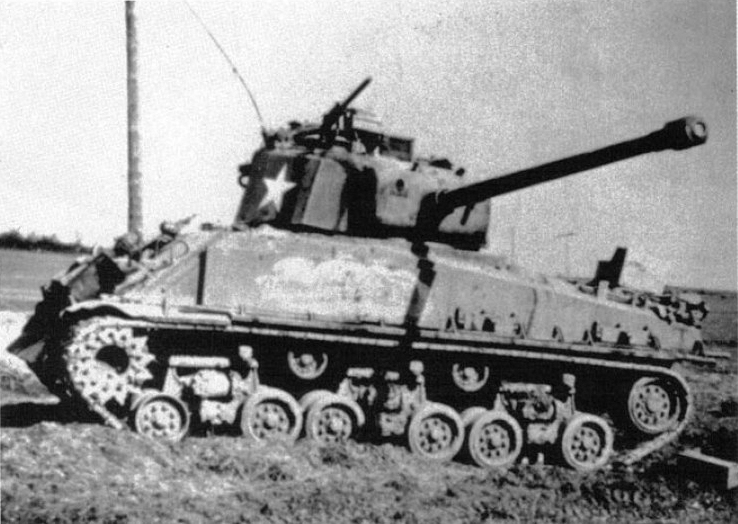
The Dragon 60297 “Thunderbolt VII” Model
The Dragon 60297 is easy on the eyes (lame pun intended). Easy Eight Sherman tanks are inherently attractive but the applique armor plates on the “Thunderbolt VII” make it really stand out among Dragon Shermans. As far as I know, it’s the only Dragon Sherman that received this special armor treatment.
Below is another portside view. Note the HVSS suspension and the detail on the rear deck.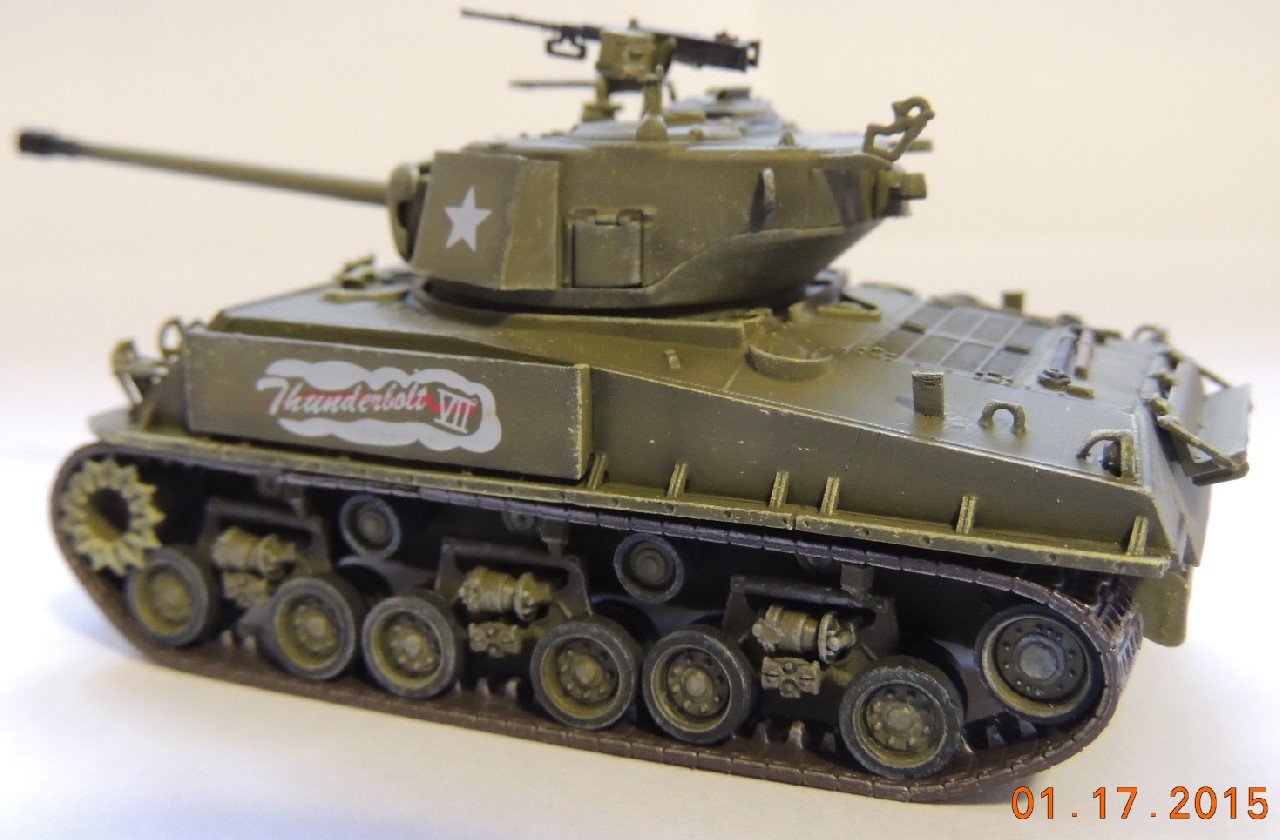
Below is a starboard side view. Dragon got the “Thunderbolt VII” wrong on this side. The design was identical on both sides. Thus, the cloud should have gone around the “VII” rather than the “T” in “Thunderbolt,” exactly the same way it is on the port side. In other words, the motif was identical — rather than symmetrical — on either side of the hull.
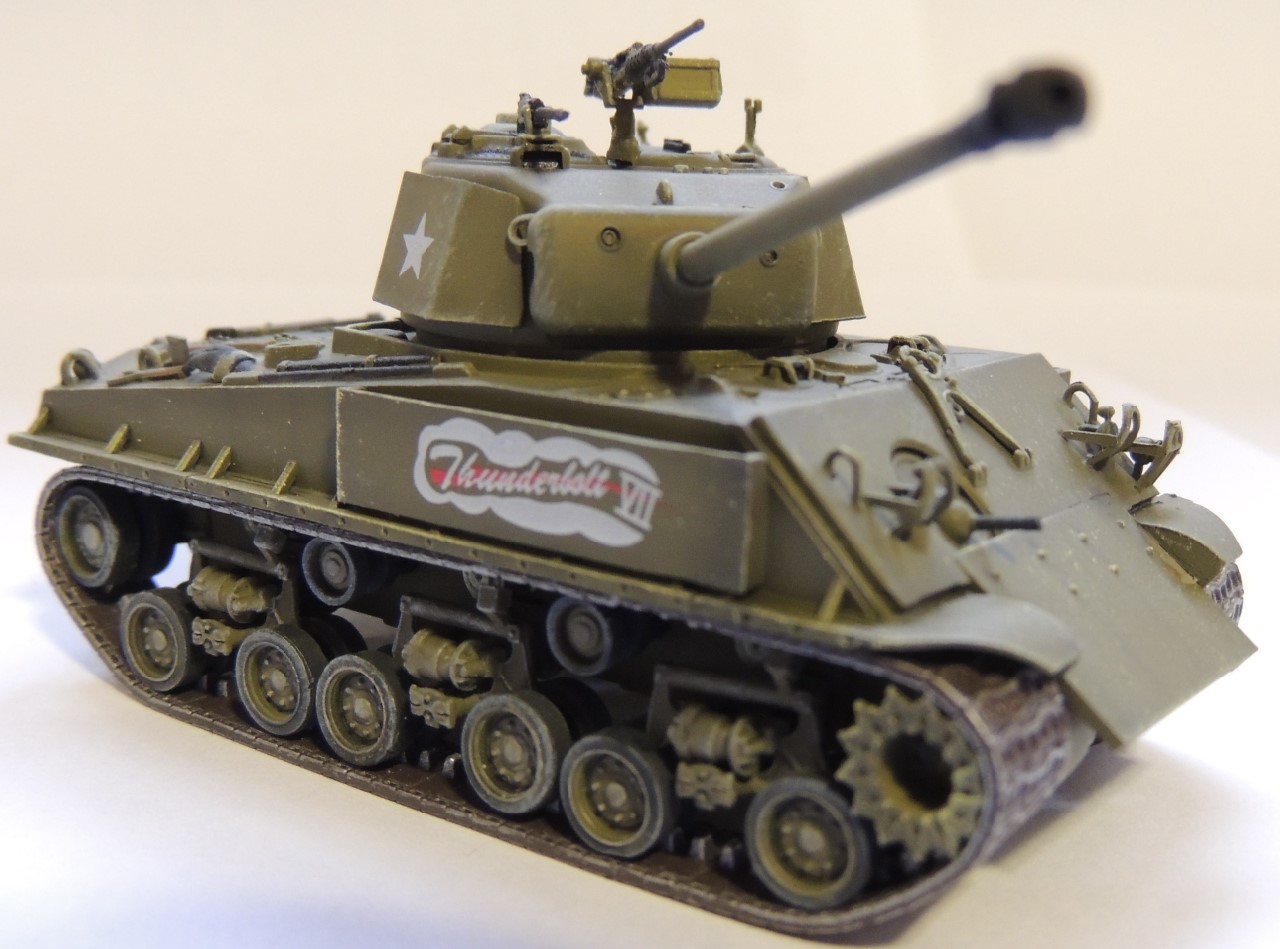 Below is a close-up of the appliqué hull and turret armor plates. As previously mentioned, Patton prohibited the use of sandbags for extra protection, so many units used cannibalized steel armor plates. Note also the colorful “Thunderbolt” motif Abrams used on his tanks. Note the white turret star, which by this time had been painted over by many other tank crews in the division. Also evident is Dragon’s signature dry brushing.
Below is a close-up of the appliqué hull and turret armor plates. As previously mentioned, Patton prohibited the use of sandbags for extra protection, so many units used cannibalized steel armor plates. Note also the colorful “Thunderbolt” motif Abrams used on his tanks. Note the white turret star, which by this time had been painted over by many other tank crews in the division. Also evident is Dragon’s signature dry brushing.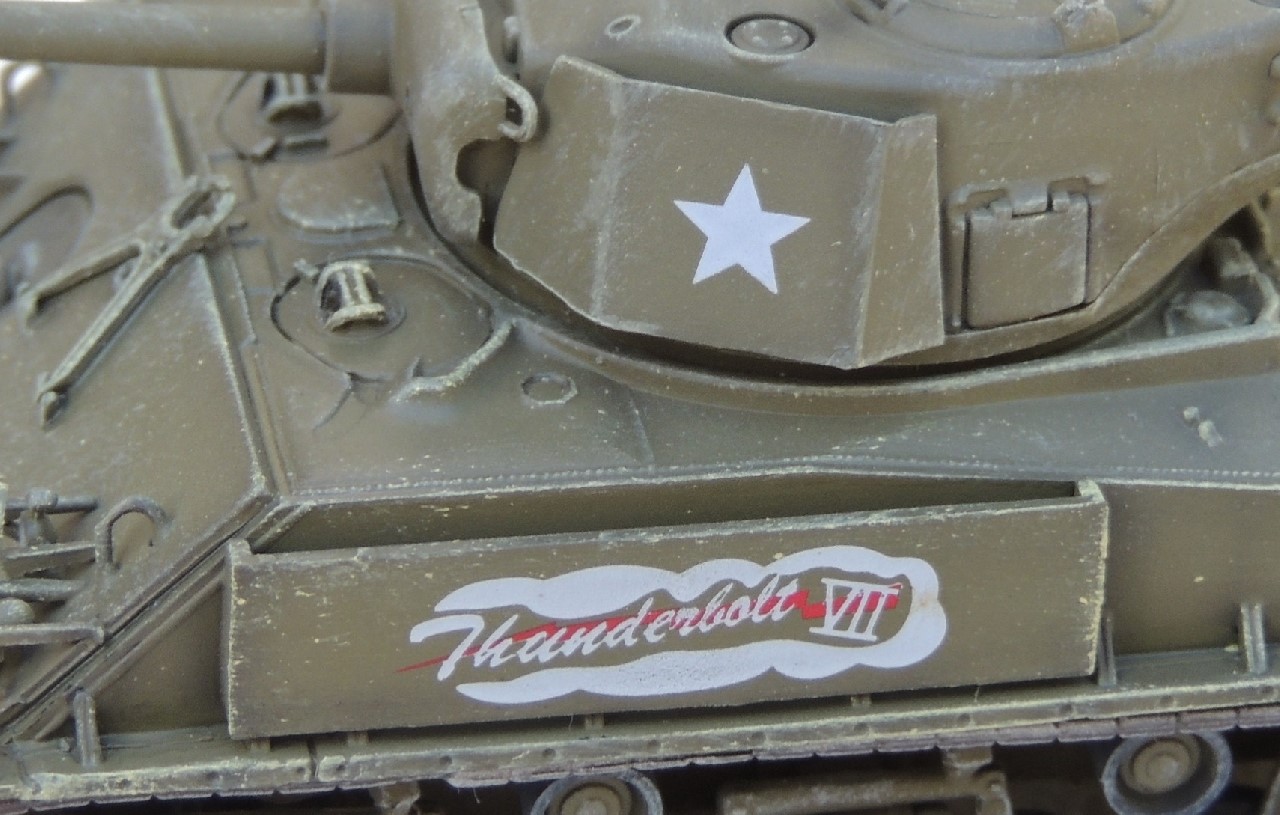
Below is a close-up of the turret. Note that, in addition to the standard .50 caliber machine gun, the “Thunderbolt VII” also packs a .30 caliber machine gun added by Abrams’ tank crew. As far as I know, only two Dragon Shermans have the extra .30 caliber machine gun, the other being Dragon 60298, another Easy Eight also from the 4th Armored Division. It is also of interest that unlike “Thunderbolt VII,” the 60298 has its turret star painted over in black. Finally, note Dragon’s impressive attention to detail in adding the casting numbers on the rear of the turret.
Note the additional applique armor on the glacis plate. I believe the only other Dragon Sherman with applique armor on the glacis plate is the aforementioned 60298.
The Profile
Below is a color profile from Steven Zaloga’s The Sherman at War (2): The US Army in the European Theater 1943-45. Judging from the profile, it’s pretty hard to complain about Dragon’s effort. About the only niggle is that the .50 caliber machine gun on the Dragon should have been further back. You can better appreciate this placement in the photos of the actual tank above.
Finally, below is a lagniappe photo of the Dragon “Thunderbolt VII” side by side with its Easy Model 36260 Sherman brother, the “Thunderbolt VI” (erroneously labeled “Thunderbolt IV” by Easy Model). The “Thunderbolt VI” was Abrams’ first 76mm Sherman and the one he commanded at Bastogne.
The Upshot
I hope you will agree that as an Easy Eight Sherman with additional hull and turret armor panels, extra .30 caliber machine gun, distinctive colorful markings, and historical significance, Dragon’s “Thunderbolt VII” is a real gem.

